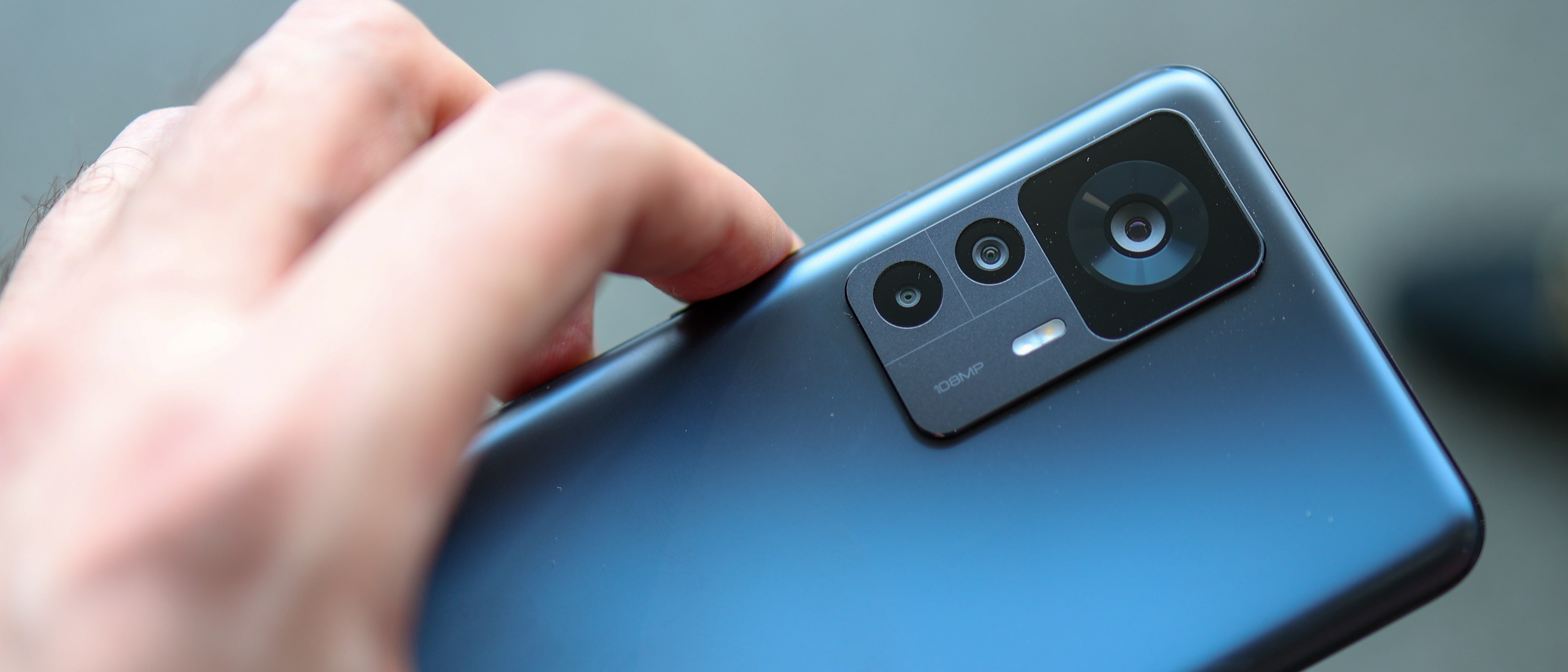Early Verdict
The Xiaomi 12T misses out on the 200MP camera of the 12T Pro, but marries mighty performance with 120W fast charging, an adaptive 120Hz AMOLED screen, and a large 5,000mAh battery. It's an excellent alternative for gamers on a budget, thanks to its Dimensity 8100 Ultra chipset, and despite its more modest camera versus the Pro, hopefully, won't drop the ball with its high-res 108MP sensor.
Pros
- +
Great power-to-price ratio
- +
Smooth 120Hz AMOLED screen
- +
Fast 120W wired charging
Cons
- -
No wireless charging
- -
Weak secondary camera specs
- -
Plastic frame isn't super-premium
Why you can trust TechRadar
Xiaomi's T series is all about flagship power at a lower-than-flagship price, and the Xiaomi 12T definitely isn’t a break from tradition. With its mighty MediaTek Dimensity 8100 Ultra grunt, it should be an excellent phone for anyone who games. A smooth 120Hz AMOLED screen, a large 5,000mAh battery, and nippy 120W wired charging only make things more enticing.
Xiaomi's kept the 12T’s price down by dialing back the camera spec when compared to the Xiaomi 12T Pro, announced alongside it, and both phones have a pared-back design when set alongside the Xiaomi 12 Pro. Specifically, the 12T and 12T Pro sport plastic frames and flat screens, in contrast to the metal and curved glass on the Xiaomi 12 and 12 Pro. Their secondary cameras are also relatively weak on paper, with low resolutions and small sensors.
Given the 12T’s price, though, and all the power it packs, missing features could well be a small price to pay if you’re a gamer looking for a large, flat screen and stacks of power.
Xiaomi 12T Pro price and availability
The Xiaomi 12T will be launching across Europe, the UK and other regions, but hasn't been confirmed for the US. Available in two storage capacities, it starts at £499 (roughly $570 / AU$875) with 128GB of storage, and climbs up to £549 (roughly $630 / AU$965) for the 256GB option.
If you get in early with a pre-order, though, you can enjoy an early-bird offer available between 20–24 of October, and pick up the 128GB model for £399 (roughly $455 / AU$700) and the 256GB model for £499 (roughly $570 / AU$875).
Xiaomi 12T design
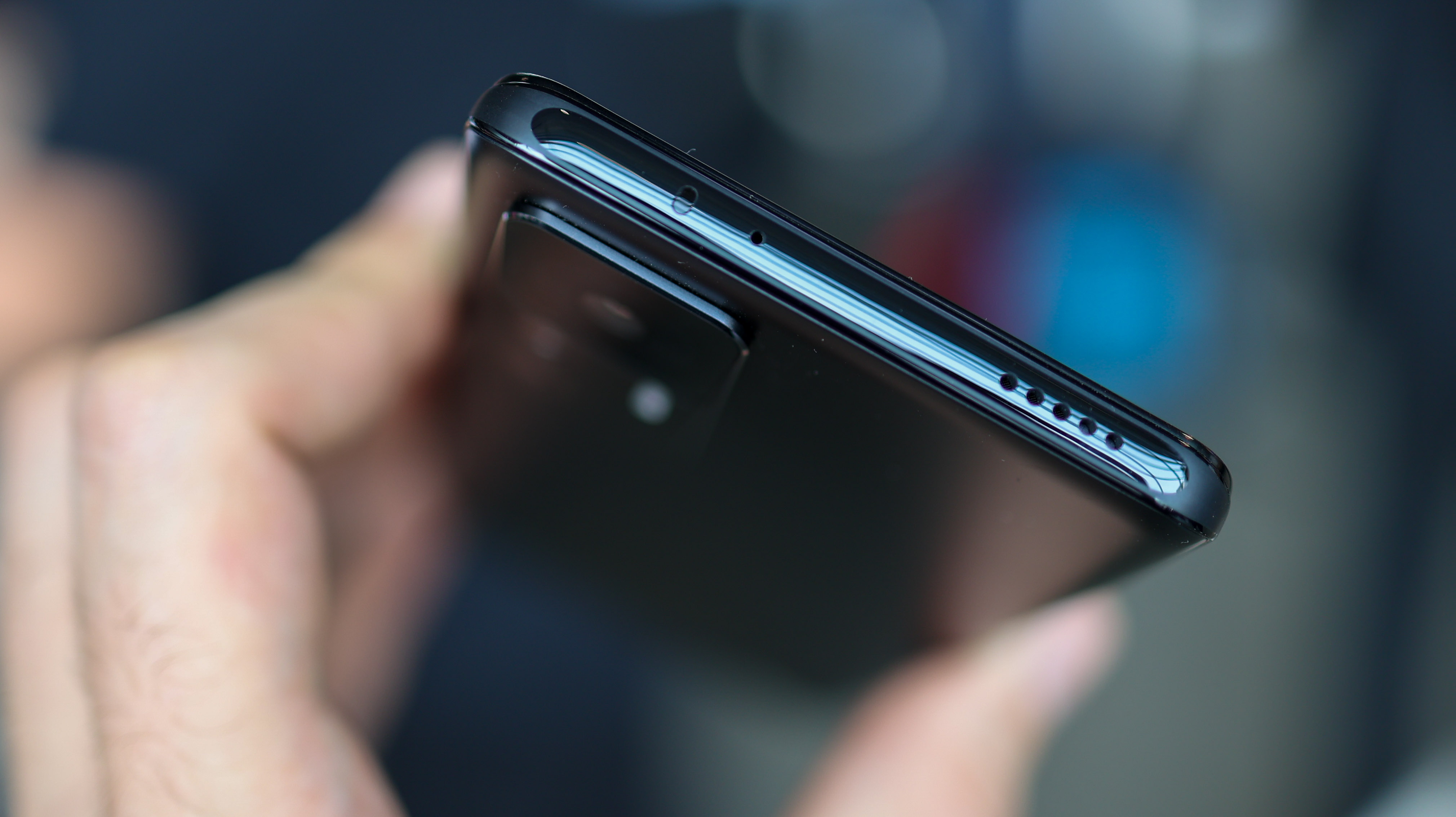


The Xiaomi 12T and 12T Pro’s designs are virtually identical – the key difference is the camera bump, which juts out a little less on the 12T, plus the phone's lack of Harman Kardon branding. Both phones pack more refined styling than their predecessors, with curved frosted glass around the back that subtly diffuses light and doesn't cling onto fingerprints too readily.
The 12T is relatively big, with its 6.7-inch screen, but isn’t unreasonably unwieldy at 202g – heavier than the 176g iPhone 14, but lighter than both the 206g iPhone 14 Pro and 240g iPhone 14 Pro Max.
Sign up for breaking news, reviews, opinion, top tech deals, and more.
When you get the 12T in your hand, you'll notice its plastic frame and flat-screen instantly stop it from feeling like a true flagship. The phone also misses out on IP68 water and dust resistance too, though it does ship with a case in the box, there’s a pre-fitted screen protector, and the screen is made of Gorilla Glass 5.
At the base of the phone is a USB-C port and a SIM tray, which takes two SIM cards. All the buttons are on the right side, and at the top is an IR blaster. The 12T has large speaker holes at the top and bottom, and around the back is a modest camera bump.
Xiaomi 12T screen
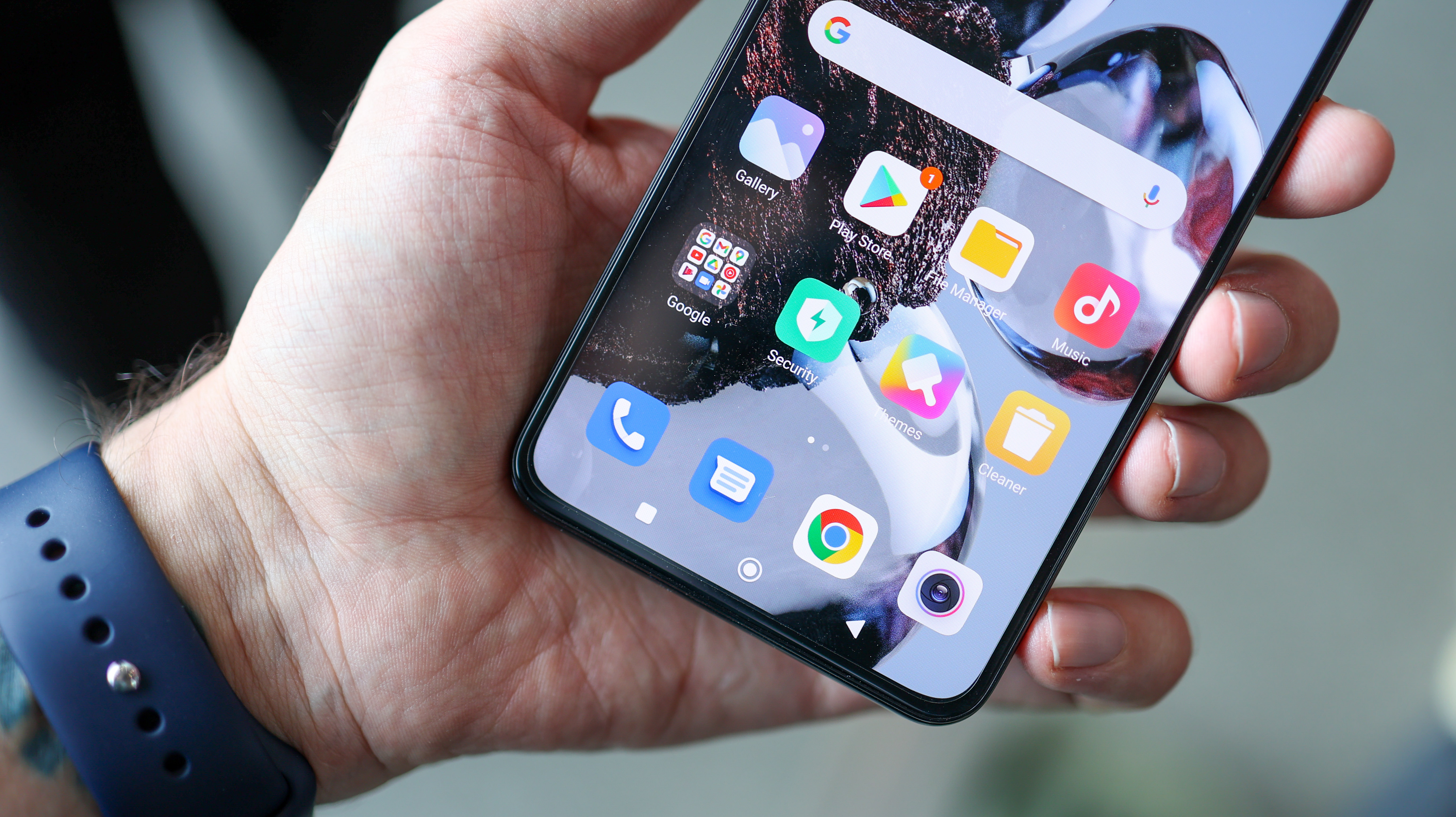
The Xiaomi 12T will give your thumb a workout with its tall, ample 6.7-inch screen. It has a punch-hole selfie camera in the top center, and for the most part, it checks most of our boxes on first impressions.
With AMOLED Dot Display tech, it’s vibrant and vivid, and an adaptive refresh rate that switches automatically between 30Hz, 60Hz, 90Hz, and 120Hz means it should be power efficient too. It also benefits from a 480Hz touch sampling rate, so is super-responsive, which should make the 12T ideal for gamers.
Capping out at 500nits when brightness is set to manual, and 900nits in high-brightness mode, the Xiaomi 12T falls behind some of the brightest beamers out there, even with its mid-range price.
Xiaomi 12T camera
While the headline feature of the Xiaomi 12T Pro is its 200MP camera, the 12T gets a comparatively ‘modest’ 108MP camera sensor. Measuring 1/1.67 inches, its sensor size is actually closely matched with that of the iPhone 14 Pro, which isn’t terrible considering the phone’s price.
The phone uses the Samsung ISOCELL HM6 sensor, which was introduced on the Realme 9, but unlike the Realme 9 – which wasn’t a very good camera phone – the Xiaomi 12T powers up its camera with OIS (optical image stabilization). Matched with an f/1.7 aperture and combining nine pixels into one (nona-bining) to produce 12MP photos as standard, we’re curious to see how the Xiaomi 12T stacks up to the competition.
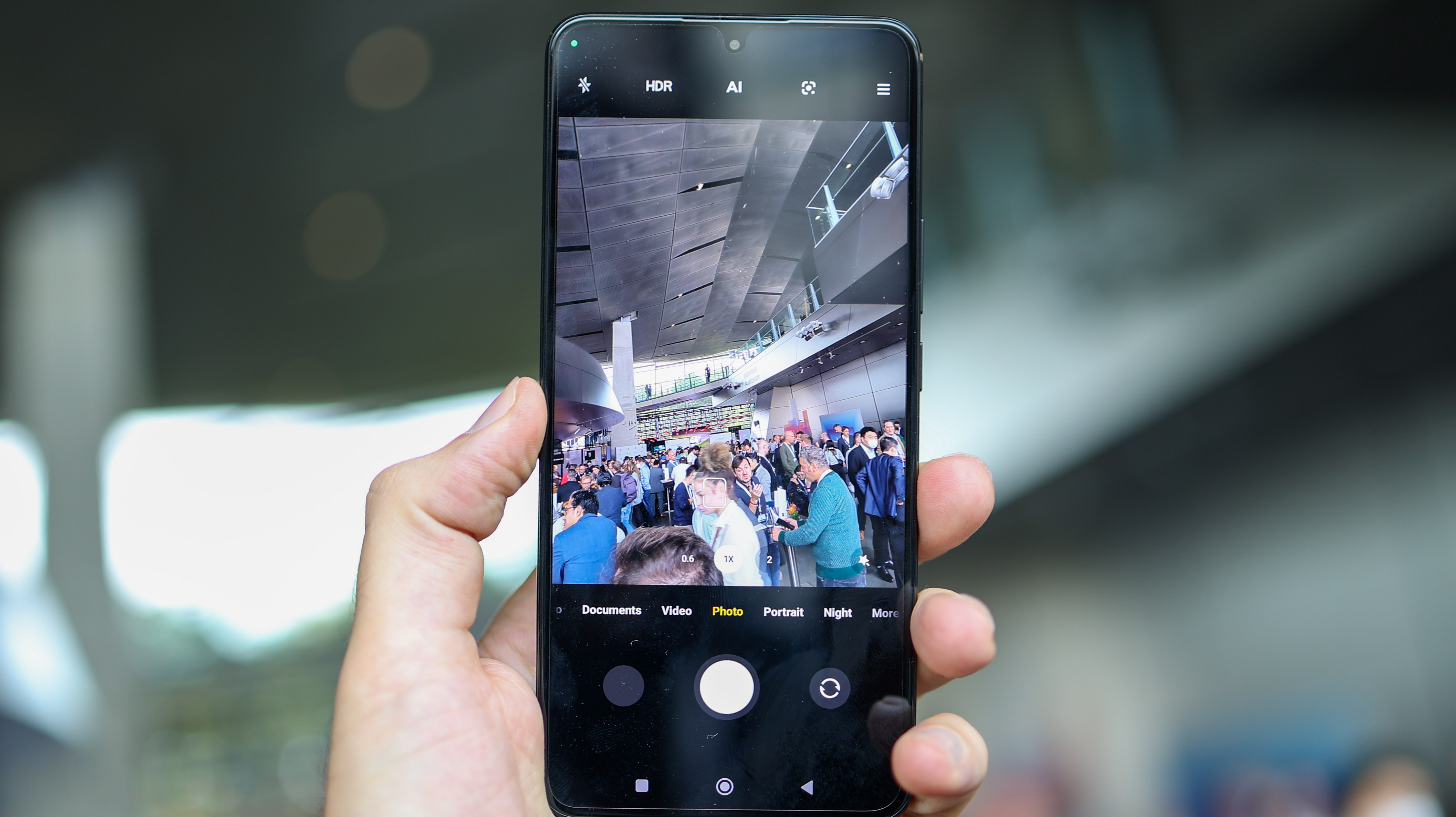
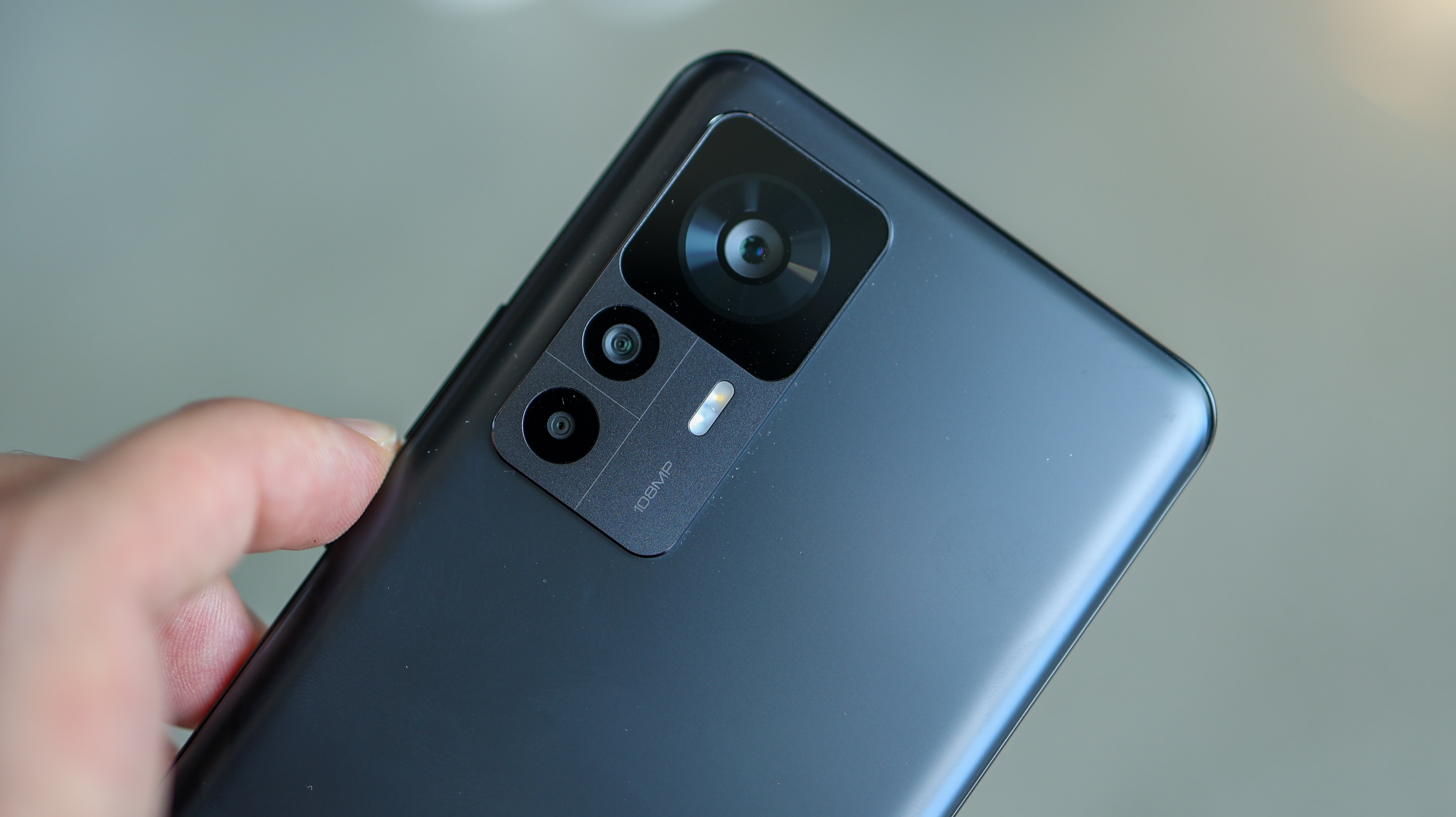
The secondary cameras don't warrant such an in-depth overview. The 8MP ultra-wide camera brings nothing new to the table with its small 1/4-inch sensor size and 120° FOV, and the 2MP macro camera looks to be a poorly-specced filler too. As for selfies, the 12T packs a promising 20MP front camera with an f/2.24 aperture.
Xiaomi 12T software
With Android 12 out of the box and Xiaomi's MIUI 13 over the top, anyone who's used a Xiaomi, Redmi, or Poco phone in the last 12 months will know roughly what to expect from the 12T’s interface.
Unlike Huawei phones, the Xiaomi 12T runs with the Google Play Store out of the box, so getting apps onboard is easy. The fact the phone runs a Google-sanctioned version of Android means that in addition to excellent app support, you can expect a base level of security from Google through over-the-air updates for a period – likely two to three years.

Xiaomi supplements the Android experience with a heavily skinned UI. It borrows some elements from iOS, like the Control Center, and it also adds plenty of features to the mix, like a virus scanner, which comes into play every time you install an app.
While it's clear Xiaomi tries to add loads of value to its UI, fans of simpler, stripped-back interfaces will prefer iOS or more stock Android iterations found on the likes of Google's and Motorola's phones. The Xiaomi 12T also runs with a last-gen version of Android, with Android 13 already available on phones like the Oppo Find X5 Pro.
Xiaomi 12T performance
The phone ships with either 128GB or 256GB of storage – loads of space for all your files, photos, apps, and games – though there’s no option to expand your space with an SD card. With 8GB of RAM, multitasking should be handled relatively well, though Xiaomi’s power saver is known to aggressively manage background apps if you have too many open.
While the 12T misses out on the Qualcomm Snapdragon 8 Plus Gen 1 chipset powering the 12T Pro, the MediaTek Dimensity 8100 Ultra is still a mighty bit of silicon. It’s the first time we’ve seen the 8100 Ultra, however, it’s a variation of the 8100 in the Realme GT Neo 3 and 8100 Max in the Oppo Reno 8 Pro – two pricier phones. With both managing heat very well, and delivering better-than-expected gaming performance, we’re looking forward to seeing how the Xiaomi 12T and its Dimensity 8100 Ultra fare under pressure.
Xiaomi 12T battery
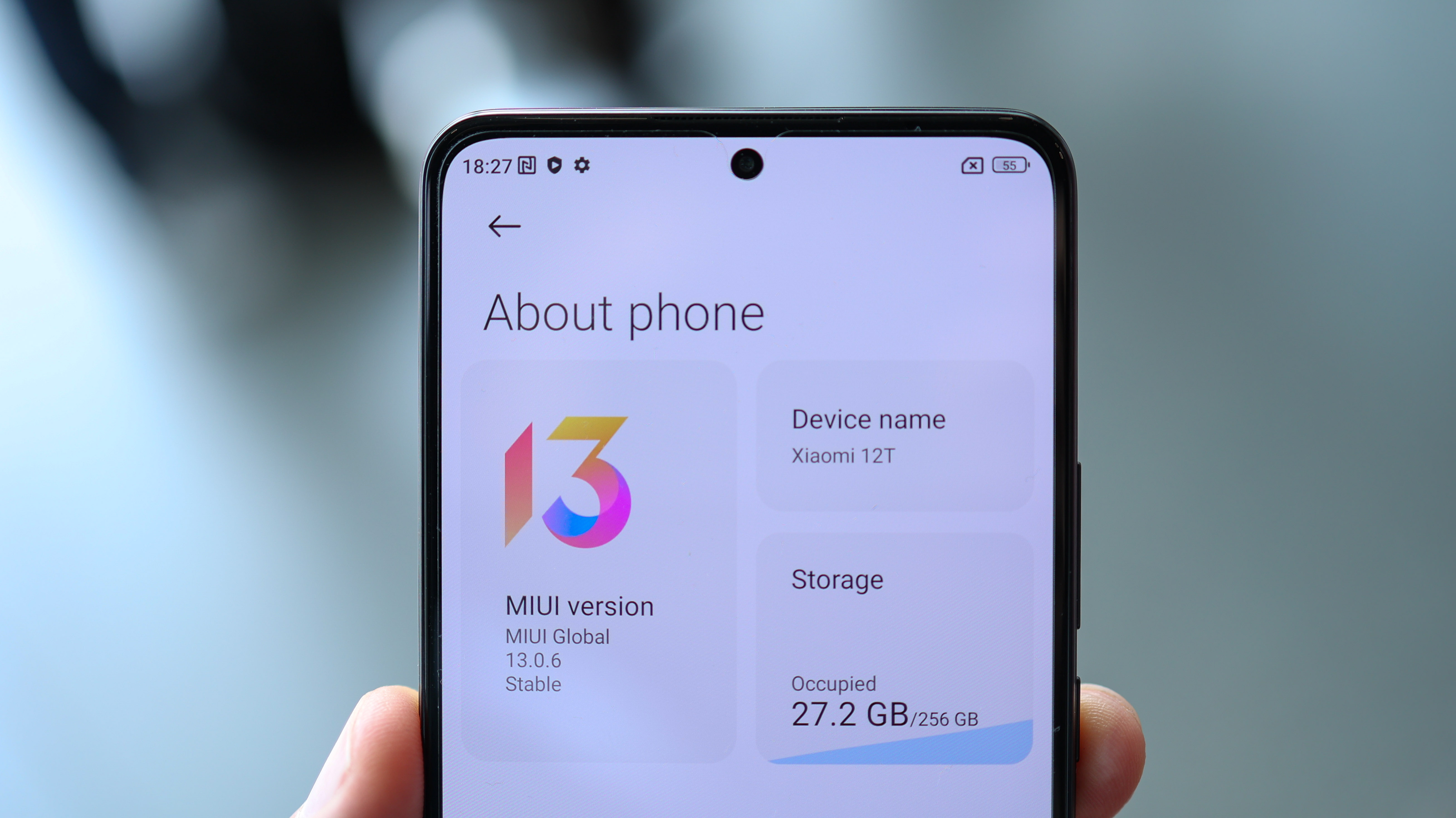
With a 5,000mAh battery, the Xiaomi 12T packs a decent-sized cell that should ensure it makes it through a full day without any issues, especially with the phone's relatively pared-back screen brightness.
Sporting 120W wired charging, Xiaomi claims you can power up the 12T in as little as 19 minutes, and there's a fast charger in the box too. The only thing missing as far as we're concerned is wireless charging.
Xiaomi 12T early verdict
With its affordable starting price and a mighty feature set, there’s a lot to love about the Xiaomi 12T on first impressions. It’s got a smashing screen, loads of storage, very rapid charging, and what should be respectable power based on similar MediaTek chipsets. Its 5,000mAh battery should also make it through a full day at least looking purely at the phone's other specs. It isn’t all so cut and dry, though.
The jury is still out on the 12T’s 108MP camera. Given the mixed experiences we had when testing the Realme 9, which features much of the same hardware, it could go either way. The fact Xiaomi has upgraded things with optical image stabilization will, hopefully, be the 12T’s saving grace, as far as photography goes.
That said, if you’re a gamer looking for a big-screened phone with stereo speakers, loads of storage, and ample power, there’s every chance the 12T will fit the bill – but check back for the upcoming full review to be sure.
- First published October 4

Basil Kronfli is the Head of content at Make Honey and freelance technology journalist. He is an experienced writer and producer and is skilled in video production, and runs the technology YouTube channel TechEdit.
What is a hands on review?
Hands on reviews' are a journalist's first impressions of a piece of kit based on spending some time with it. It may be just a few moments, or a few hours. The important thing is we have been able to play with it ourselves and can give you some sense of what it's like to use, even if it's only an embryonic view. For more information, see TechRadar's Reviews Guarantee.
